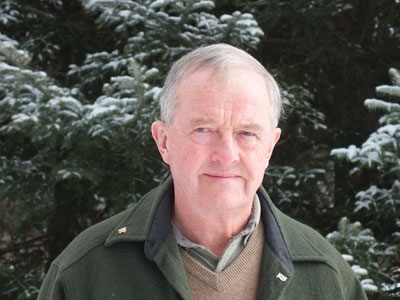
Industry News
News
Looking for Recognition
The Canadian Association of Forest Owners (CAFO) is a new association established to represent the interests of the owners of private forest land in Canada.
Federal environmental legislation applies to all lands in Canada. When applied to publicly owned forest land the costs of any reduction in productivity is shared by all Canadians. But when regulations are applied to private lands the burden falls directly on the owners. CAFO’s main field of activity will be to ensure that federal environmental regulation is applied with the rights of private property owners’ firmly in mind and to support the payment of compensation in the event of significant loss of production and property value. CAFO’s objective is to maintain and enhance the productivity of these lands for the benefit of the owners and for their contribution to the Canadian economy.
Canada has 402 million ha of forested land. Approximately 211 million ha of this huge forest is under active management. In 2010 the harvest was 142 million m3. This harvest supported a $53 billion industry and 238,560 direct jobs.
Eighty-nine per cent or 187 million ha of the 211 million ha of managed forest is in public ownership – owned and managed by the provinces in the long-term interests of the people. Eleven per cent (25 million ha) is privately owned.
There are two categories of privately owned forest – 20 million ha of private woodlots owned by approximately 450,000 rural families and five million ha of “industrial” forest land. The name is a bit misleading as this land is owned by a variety of types of organizations, including forest products companies, pension funds, foundations, endowment funds and private investors.
The management objectives of the various types of owners are very diverse.
Publicly owned forest is managed to achieve a variety of public objectives including timber. The nature of most tenure agreements provides the licence holders with little incentive to improve productivity because they have no certainty that they will benefit from investments in enhanced management.
Woodlots and “industrial” forest lands are generally located in the southern, settled regions of the country and are on more productive sites than the majority of publicly owned forest lands.
The 25 million ha of private land is only 11% of our managed forest but contributes 19% of the harvest due to the productivity of these lands.
The effects of different management objectives and site productivity vary considerably.
The owners of the “industrial” forest land usually have timber production as a core management objective. Timber production is their reason for owning and managing the land. These owners are also more likely to invest money to enhance production because they are confident that they will benefit directly from improved productivity.
Woodlot owners have very diverse ownership and management objectives. Some hold the land to keep it in the family or for conservation purposes. Many owners manage their woodlots to provide income to support the family. It is likely that the productivity per hectare of woodlots would be similar to that of the “industrial” forest land if all woodlot owners had timber production and family income as their main management objective.
Wood harvested in Canada is used to produce a wide range of primary and value-added products. Each cubic metre of roundwood harvested contributes $379 in value of shipments to the Canadian economy. Every 10,000 m3 harvested supports 16.8 direct jobs on woodlands operations, transport to the mill, mill operations and value-added industries as well as conversion of paper to office stationery and packaging.
Each cubic metre of wood harvested from sustainably managed Canadian forests adds to the wealth of the country and the prosperity of our people.
The Canadian Association of Forest Owners has been established to help ensure that the productivity of Canada’s private forest lands are maintained and enhanced to the benefit of the Canadian economy and the forest owners. It is important that governments acknowledge the difference between public forest and private property in both policy and regulation.
Tony Rotherham RPF (BC & Ontario) is the executive director of CAFO/ACPF. He can be reached at execdirec@cafo-acpf.ca.
October 24, 2012 By Tony Rotherham
 Tony Rotherham The Canadian Association of Forest Owners (CAFO) is a new association established to represent the interests of the owners of private forest land in Canada.
Tony Rotherham The Canadian Association of Forest Owners (CAFO) is a new association established to represent the interests of the owners of private forest land in Canada.Print this page